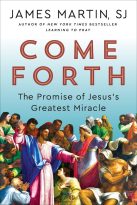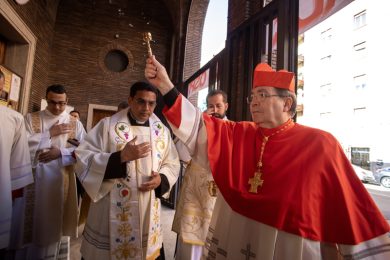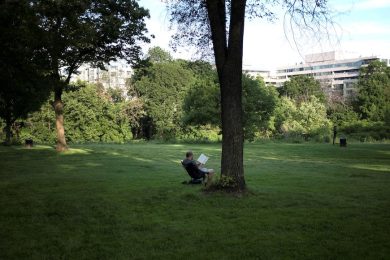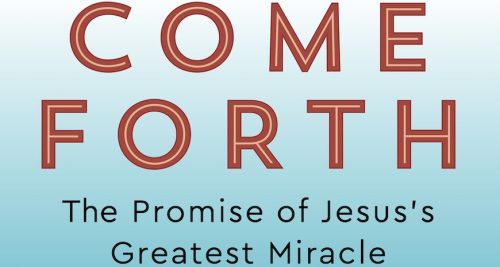BOOK REVIEW: ‘Come Forth: The Promise of Jesus’s Greatest Miracle’ by James Martin, SJ
By Elizabeth Scalia | OSV News
“Leaving the tomb is hard … but so is going in.”
The words were uttered to Jesuit Father James Martin as he helped a man make his exit from the tomb of Lazarus. Within context, the remark is practical and realistic; visiting this spot in the West Bank town of al-Eizariya is not an easy one as pilgrims journeying from Jerusalem must enter disputed territory, and then navigate the low lintels and perpetually slippery steps that characterize so many of the ancient places Christians seek out in the Holy Land. Entrances and exits there can often seem challenging for modern bodies to traverse.

Metaphorically, however, the man’s observation is full of keen spiritual and human insight, inspiring meditations both broad and deep. Father Martin notes this as he lays out his ambitions for his latest book. “Journeying into the place of letting go can be difficult,” he writes. “With this book I hope to be your guide down that staircase, into the tomb, and then back out into the light.”
That’s a pretty heady objective, but Martin is more than game for it. As he reveals from the first pages, the story of Jesus bringing his friend Lazarus back from the dead is one that has filled him with wonder since a young age.
I once had the great fortune of being led through the Vatican Museum by a prominent art historian who is a Michelangelo specialist. She was enthusiastic and informative about every exhibit we visited but each time Michelangelo’s name came up or we beheld his work, the historian’s passion for the artist gushed forth from her, as fresh and clear as the waters delivered from Rome’s ancient aquifers. Because she loved Michelangelo Buonarroti, she made sure that if we did not leave her company loving him as well, we would at least understand why we should.
Such is the case with Father Martin and his latest book. He is so excited for his subject, his appreciation is so well grounded in historical study, scriptural contemplation and a pilgrim’s wonder, that he helps the reader to want to learn more, contemplate more, wonder more, not just about the raising of Lazarus but about who he and his sisters Martha and Mary were to Jesus, and who he might even be within other Gospel stories and verses. And what’s this Order of Lazurus? And what is Lazurus Saturday?
In “Come Forth” Martin shares his conversations with, or reading of, respected scholars within the church and from the Eastern rite and Protestant traditions. He brings archaeological and architectural research into the mix and takes the time to point out small details within a work of art that can help fine-tune our understanding of this “greatest miracle.” We take a deep dive into the story, sometimes line-by-line. Father Martin devotes an entire chapter to “Father, I thank you…” (Jn 11:41), a prayer he suggests may be as important as the Our Father, if only we’d remember to say it.
If this sounds like obsessive minutia, it’s not, and “Come Forth” is never pedantic or boring. On the contrary, the book gallops along upon the author’s spiritually focused enthusiasm and his accessible prose.
Because Father Martin strongly advocates for pastoral Catholic accompaniment and ministry to same-sex attracted people, it’s fair to wonder whether, by calling the book “Come Forth,” he was somehow signaling the LGBTQ+ community. I wondered about it, myself. More cynical readers may suspiciously snark that the book must be a kind of Trojan Horse, full of hidden soldiers of gay solidarity dressed in the language of Scripture. Father Martin addresses this, acknowledging that such snide comments might happen, and might unhelpfully distract from the point of the book which, he writes, “is not focused on LGBTQ people but on everyone.”
Well, it is for everyone — the lessons we can take away from this exploration of Lazarus (which can go as deep as we are willing to take the helpful prompts to prayer and contemplation that conclude each chapter) are lessons that inform us and resonate within us thanks to our deeply human commonality. If Father Martin spends perhaps six paragraphs musing on how meaningful Jesus’s command to Lazarus might be for people in the LGBTQ+ community, it does not detract from what is overall a compelling chair pilgrimage with a co-religionist who is endlessly fascinated by Jesus and reminds us that the life of faith is lively, ever-curious, full of wonder and, in this book’s case … kind of fun.
Elizabeth Scalia is culture editor for OSV News. Follow her on Twitter/X @theanchoress.






















